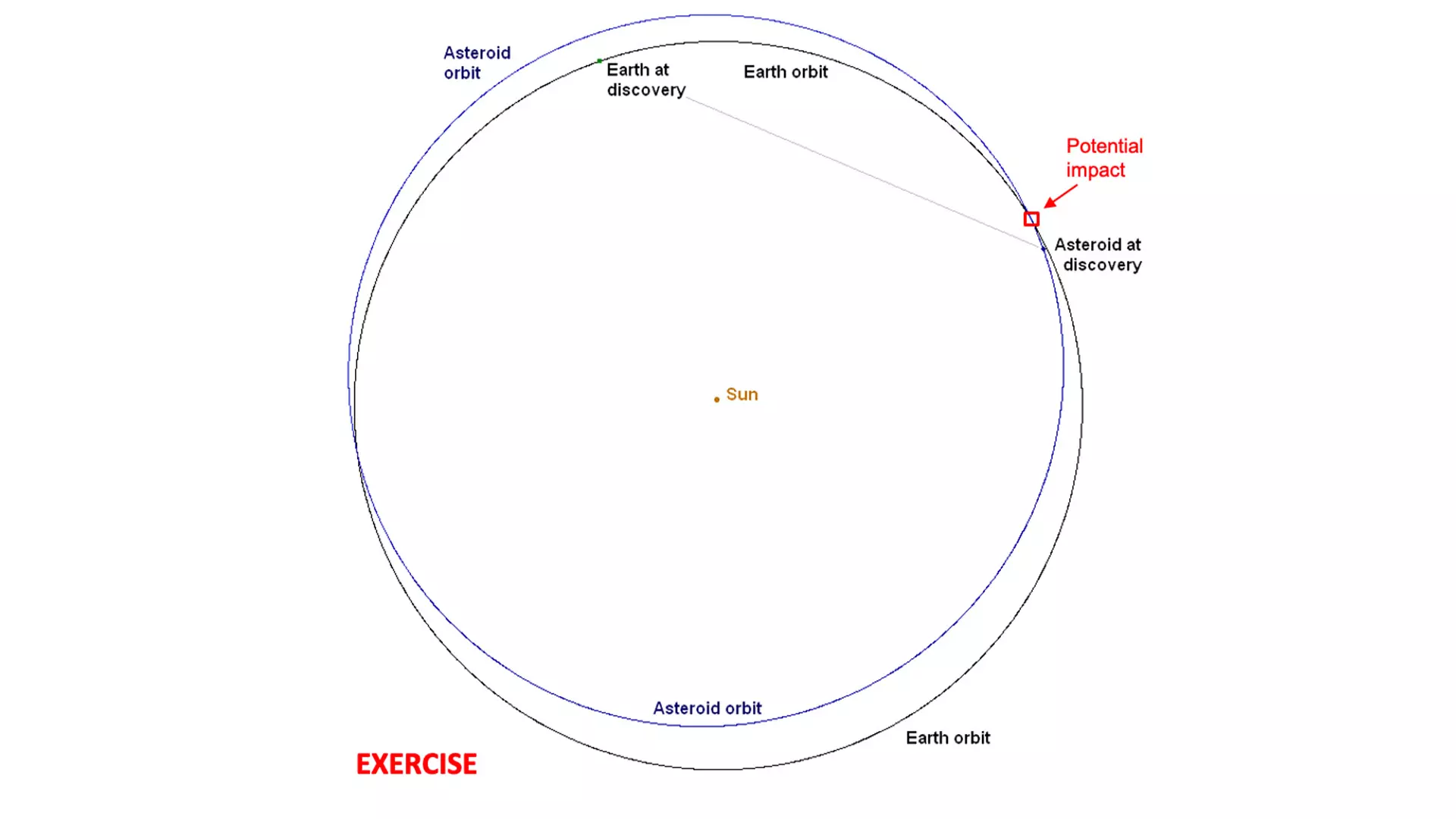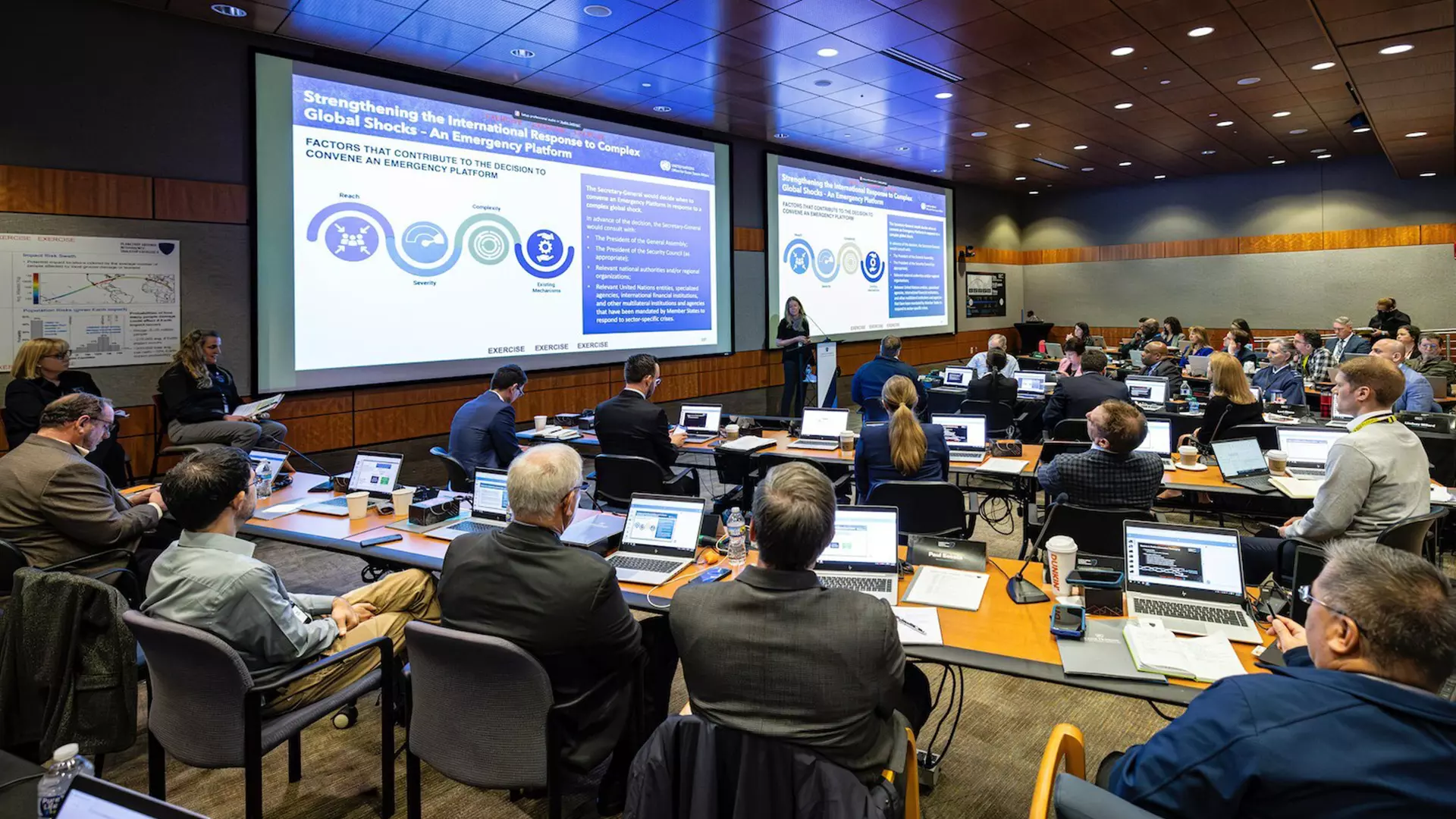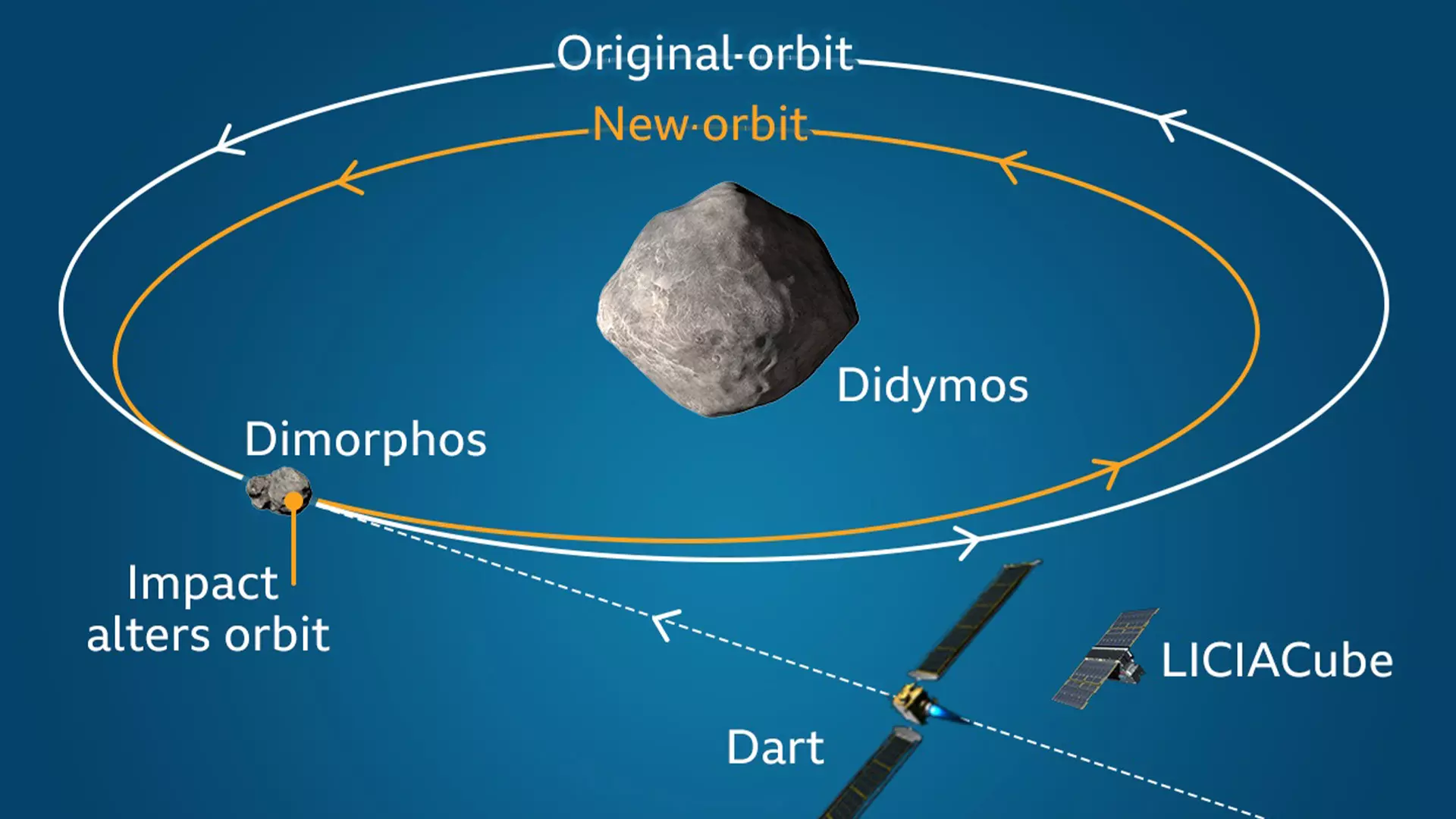
- Home
- India
- World
- Premium
- THE FEDERAL SPECIAL
- Analysis
- States
- Perspective
- Videos
- Sports
- Education
- Entertainment
- Elections
- Features
- Health
- Business
- Series
- In memoriam: Sheikh Mujibur Rahman
- Bishnoi's Men
- NEET TANGLE
- Economy Series
- Earth Day
- Kashmir’s Frozen Turbulence
- India@75
- The legend of Ramjanmabhoomi
- Liberalisation@30
- How to tame a dragon
- Celebrating biodiversity
- Farm Matters
- 50 days of solitude
- Bringing Migrants Home
- Budget 2020
- Jharkhand Votes
- The Federal Investigates
- The Federal Impact
- Vanishing Sand
- Gandhi @ 150
- Andhra Today
- Field report
- Operation Gulmarg
- Pandemic @1 Mn in India
- The Federal Year-End
- The Zero Year
- Science
- Brand studio
- Newsletter
- Elections 2024
- Events
July 12, 2038: Is an asteroid going to end life on Earth?

Look up, or else we are doomed.No, NASA has not found an asteroid on a collision course with Earth, but danger may lurk in dark deep space.Imagine that astronomers discovered a previously unknown massive near-Earth asteroid on October 4, 2023, and other observatories confirmed the discovery the next day.Detecting a near-Earth asteroid is less glamorous than it may seem. Astronomers...
Look up, or else we are doomed.
No, NASA has not found an asteroid on a collision course with Earth, but danger may lurk in dark deep space.
Imagine that astronomers discovered a previously unknown massive near-Earth asteroid on October 4, 2023, and other observatories confirmed the discovery the next day.
Detecting a near-Earth asteroid is less glamorous than it may seem. Astronomers have discovered more than 35,000 asteroids in the Earth’s neighbourhood, of which nearly 11,000 are bigger than 140 metres in dimension. These asteroids are given rather mundane designations, such as the one we're discussing here—2023 TTX. TTX is short for 'Table Top Experiment'.
Ten days later, on October 15, 2023, an astronomer computed its path. She found a 0.01% probability that the asteroid and the Earth may collide, which makes the asteroid interesting.
Potential threat detected
As the news of the potential threat spreads, more astronomers become intrigued. They delve into old data and previous observations to see if this object was detected earlier, a process known as 'precovery' detection. This involves meticulously reviewing past observations and comparing them with the newly discovered object’s characteristics. In this case, they find evidence of the asteroid in archival data, which increases the probability of it striking Earth to 2.7%.

Once the probability of an asteroid striking Earth crosses the threshold of 1% with an object exceeding 10 metres in size, the International Asteroid Warning Network (IAWN) is triggered and swings into action.
The International Asteroid Warning Network (IAWN) is a remarkable global initiative established under the United Nations Office of Outer Space Affairs Committee on Peaceful Uses of Outer Space. It links the institutions involved in discovering near-Earth asteroids, whether observatories or institutions archiving data. All astronomers are required to report any new discovery of near-Earth asteroids to IAWN. This united effort, with more than 53 institutions from over 25 countries, is a testament to our collective commitment to planetary defense.
Upon receiving the alarm, additional resources are mobilised, and the asteroid 2023 TTX is tracked from October 16, 2023, to March 30, 2024, from several observatories worldwide. This global tracking effort involves astronomers from different countries and institutions, all working together to gather more data about the asteroid's trajectory and probable size. This collaborative approach raises the estimated impact probability to above 10%.
Averting the apocalypse
Astronomers panic as the threat of the asteroid 2023 TTX looms. UN-endorsed 'Space Mission Planning Advisory Group' (SMPAG), established in 2013, comes into the picture once the threat of collision is more than 10%. The primary purpose of the SMPAG is to prepare for an international response to a threat by a near-Earth object. With this proactive approach, with nearly 19 space agencies, including NASA, ROSCOSMOS of the Russian Federation and CNSA, China, as members, the joint international effort is created to face the potential disaster.
For the next several weeks, more data was collected, and astronomers revised the estimated probability of Earth's impact to 72%. There was not enough information to conclude with certanity the colliion will take place. With 72% probability, the object could strike or just flypast.
More data would help, but alas, the 2023-TTX's path took it near the Sun in the sky during March 2024. The killer asteroid was hidden for the next seven months in the glare of the Sun's intense radiation. No telescope from Earth could observe it and gather additional data, so policymakers had to make decisions with partial information.
A 72% chance does not mean it is certain the asteroid will hit Earth, but can one take a risk and do nothing? The potential consequences of an asteroid impact, such as widespread destruction, loss of life, and long-term environmental effects, are severe. Should one invoke a precautionary approach, divert money and resources from other pressing immediate needs, or wait for more information to know the consequences? It's a dilemma for policymakers.
A countdown clock is set at the Space Mission Planning Advisory Group's office, slowly ticking towards D-day, July 12, 2038.
Table Top Experiment
Is this threat real? No, it is not factual; no asteroids have been detected by NASA speeding towards the Earth. This is the hypothetical scenario presented to experts who met at the two-day exercise conducted on April 2 -3, 2024, hosted by the Johns Hopkins University Applied Physics Laboratory in Laurel, Maryland. What appears to be pages taken from a screenplay of a Hollywood film, reminiscent of Don't Look Up (2021), is a hypothetical brief given the 'planet savers'.

The table top simulation exercise was conducted in April.
Through the exercise, a kind of ‘thought experiment’, the experts were to devise a viable strategy to avert the collision and prepare for mitigation in the face of the hypothetical asteroid impact threat and partial information. In scientific terms, a 'thought experiment' is a theoretical scenario designed to test the feasibility of a concept or strategy. In this case, the experts were simulating a real-world scenario to evaluate the effectiveness of their proposed strategies in a controlled environment. It is a kind of drill in case, one day, a killer asteroid is on its way to Earth.
But in a world where fake seems genuine and truth seems fiction, the exercise is presented as a real threat to Earth. Social media is abuzz with scaremongering about an asteroid striking Earth in 2038 and causing massive devastation. Neither NASA nor astronomers have detected such asteroid on a collision course with Earth. Rest assured.
The threat hanging from the heavens
But in the long term, we are doomed if we don't look up. Like the famed sword of Damocles, suspended only by a single strand of horsehair, the threat of asteroid collision hangs over the Earth's head.
It is expected to find broken bricks, discarded paint tins, and other remnants near a recently completed construction site. Likewise, the solar system is full of space rocks, big and small, leftover from the formation of the solar system and its planets. Billions of space rocks, technically called solar system objects, swarm interplanetary space, and millions whiz past Earth.
Near-Earth Objects
Near-Earth Objects, or NEOs, are asteroids and comets close to the Earth. Some of them are potentially hazardous. It is natural that with fragments of space rocks omnipresent in space, quite a few of them collide with Earth occasionally.
One estimate suggested that nearly 44,000 kilograms of space rocks shower on Earth daily. Most are as microscopic as a grain of sand or at best a fist-sized rock. They heat up and burn due to friction in the Earth's atmosphere and vaporise, resulting in a momentary streak of light and a display of beautiful shooting stars.
An estimated 45 million space rocks less than 10 metres in size throng near Earth. With current technology, detecting and keeping track of such small objects is impossible. Less than 0.1% have been detected so far. However, these rocks pose no grave danger to us.
Only if the space rock is five metres or bigger has a chance to survive the burn and make it all the way to the ground. Even then, only a tiny part, pebble-size, hits the ground. However, such collisions are less frequent, about once a year.
Nevertheless, if the size is bigger, it can cause fireballs, air explosions, and shock waves that could shatter the glass windows near the impact site. Recently, on May 18, 2024, one such space rock, speeding at 160,000 km per hour, ran through the night skies over Portugal and Spain, lighting up the sky in a blue-green fireball. The space rock burned and exploded around 60 kilometres above the Earth over the Atlantic Ocean, causing no damage to life or property.
Undetected lurking danger
However, a few years ago, on February 15, 2013, a previously undetected asteroid about 18 metres in size exploded as a fireball over Chelyabinsk, Russia. Three cities on the path of the fireball experienced airbursts and shock waves. The blast shattered the windows, and the flying broken glass injured about 1,600 people.
Out of the estimated 1,20,000 NEOs that are nearly 50 metres big, only 12% have been identified. Therefore, a sudden, unexpected fireball is not a surprise.
A larger asteroid has graver consequences. If it is larger than 140 meters, its impact could be devastating, resulting in mass causalities. Therefore, astronomers are especially on the lookout for NEOs larger than 140 metres.
Astronomers estimate more than 25,000 NEOs, roughly 140 meters or larger. The International Asteroid Warning Network (IAWN) detects large NEOs, tracks their paths, and identifies their threat potential. They are tracking all the objects that are more than 140 meters, and our current computations show that none of the known ones will threaten Earth in the next 100 years. However, only 43% of the NEOs bigger than 140 metres have been found. Therefore, there is a high likelihood that a hitherto undetected NEO may suddenly spring from some part of the sky, hurling towards the Earth with inadequate warning.
How to nudge the asteroid?
What can we do if a giant space rock is hurling towards us? Experts found that breaking up the asteroid into bits and pieces, a la Hollywood film Armageddon (1998), is impractical. The current hope is the kinetic impact method.
Just as the batsman tilts the bat to change the direction of the ball's path, NASA's DART mission was the first to test asteroid deflection for planetary defence by smashing a spacecraft into an asteroid.
If we slam a spacecraft at a very high speed, the craft's momentum will be transferred, and the asteroid's path will slightly deflect. This is the crux of the kinetic impact method.
Will this work? The answer to this question is no longer theoretical. NASA conducted a live experiment to change the path of an asteroid in a project called the Double Asteroid Redirection Test (DART).
Launched on November 23, 2021, the DART spacecraft heaved itself towards the moonlet Dimorphos.

Dimorphos is an asteroid that revolves around another more enormous asteroid called Didymos. They are binary systems, with each asteroid waltzing around the other. This Didymos-Dimorphos double asteroid binary system orbits the Sun in a highly elliptical orbit once every 770 days.
On September 26, 2022, the craft slammed Dimorphos at nearly 24,000 kilometres per hour. Due to the impact, the moonlet gained momentum, and the orbital period decreased. Before the collision, the Dimorphos orbited its companion, Didymos, once every 11 hours and 55 minutes. After the crash, the Dimorphos take 32±2 minutes less to go around the Didymos.
The size of the Dimorphos is around 160 metres, nearly the length of 1.5 football fields. The DART mission showed that even with a small spacecraft, we can wee-bit nudge the orbit of an asteroid. Scientists estimate that even half of the change achieved in the DART mission is enough to deflect an Earth-approaching football field-sized killer asteroid and prevent impact, provided we detect them well in advance, say ten years ahead.
Finding asteroids before they find us
A stitch in time saves nine. If we can detect the Earth's approaching object much in advance, say 10 to 15 years before the impending impact, then a tiny nudge to its path is all that is required. Even a slight change in direction will make the asteroid fly past Earth at a safe distance without head-on collision.
While developing a viable technology is prudent, detecting the threat in time is critical. NASA is poised to launch its Near-Earth Object (NEO) Surveyor, the first space telescope specifically designed to hunt near-Earth asteroids and comets that may soon be potential hazards to Earth.
NASA's NEOWISE space telescope was also an asteroid and comet-hunting telescope launched in 2013. But its mission is to detect all asteroids and comets, not just those that could threaten Earth. In the past several years, NEOWISE has collected data on more than 1,58,000 minor planets, 34,000 of which had never been discovered. However, the next-gen NEO Surveyor is designed to detect near-Earth objects and find Earth-approaching asteroids and comets. With NEO Surveyor, astronomers hope to detect nearly all Near-Earth comets and asteroids larger than 140 metres.
The mock drill
The hypothetical exercise was conducted jointly by the NASA Planetary Defense Coordination Office in partnership with the Federal Emergency Management Agency's Response Directorate and the Department of State Office of Space Affairs. Various scientific agencies such as Jet Propulsion Laboratory (JPL), Ames Research Center (ARC), Goddard Space Flight Center (GSFC), Lawrence Livermore (LLNL), Los Alamos (LANL) and Sandia (SNL) national laboratories provided the technical inputs. In this simulation, NASA explored how the US and its agencies, in particular asteroid experts, NASA workers, federal emergency management officials, and their international partners, might respond when faced with an asteroid impact threat.
It appears that the participants toyed with three options: simply waiting for more data to clear the uncertainty and be sure that the Earth impact is imminent; commencing a space mission to study the asteroid, something like knowing the enemy; and third, creating a spacecraft mission that can not only study the asteroid but perhaps nudge and change its path through space. It is reported that the outcome was unsatisfactory; the participants could not develop a viable plan to avert the collision. More work is needed to prepare a fail-proof planetary defence plan.
This is the fifth edition of the exercise. The last time the fourth exercise was held was in August 2022. If a colossal asteroid strikes the Earth, crippling communication and transport, what should be the response. This was the critical agenda last time, and a framework for post-impact protocols, including local government involvement, was evolved.
